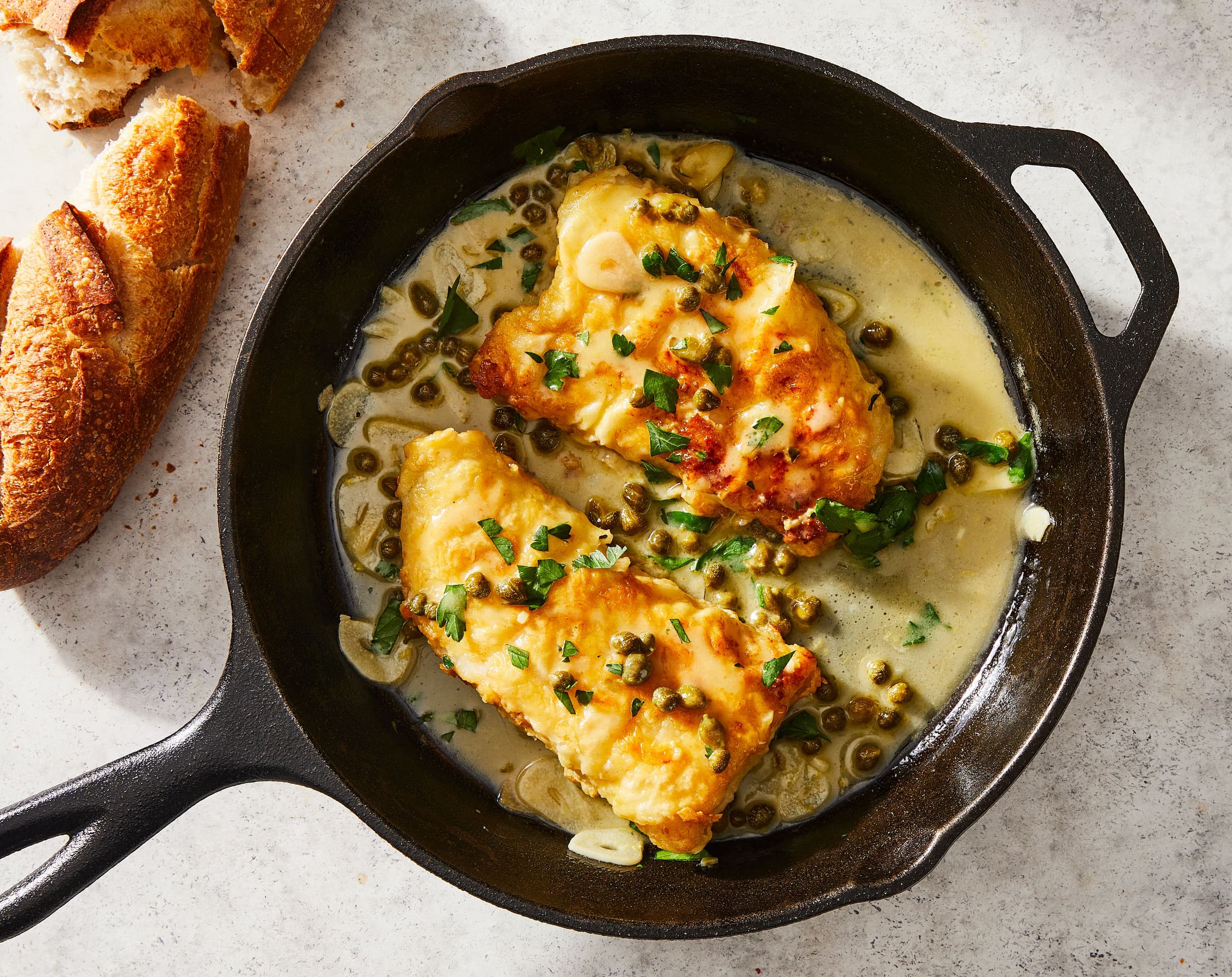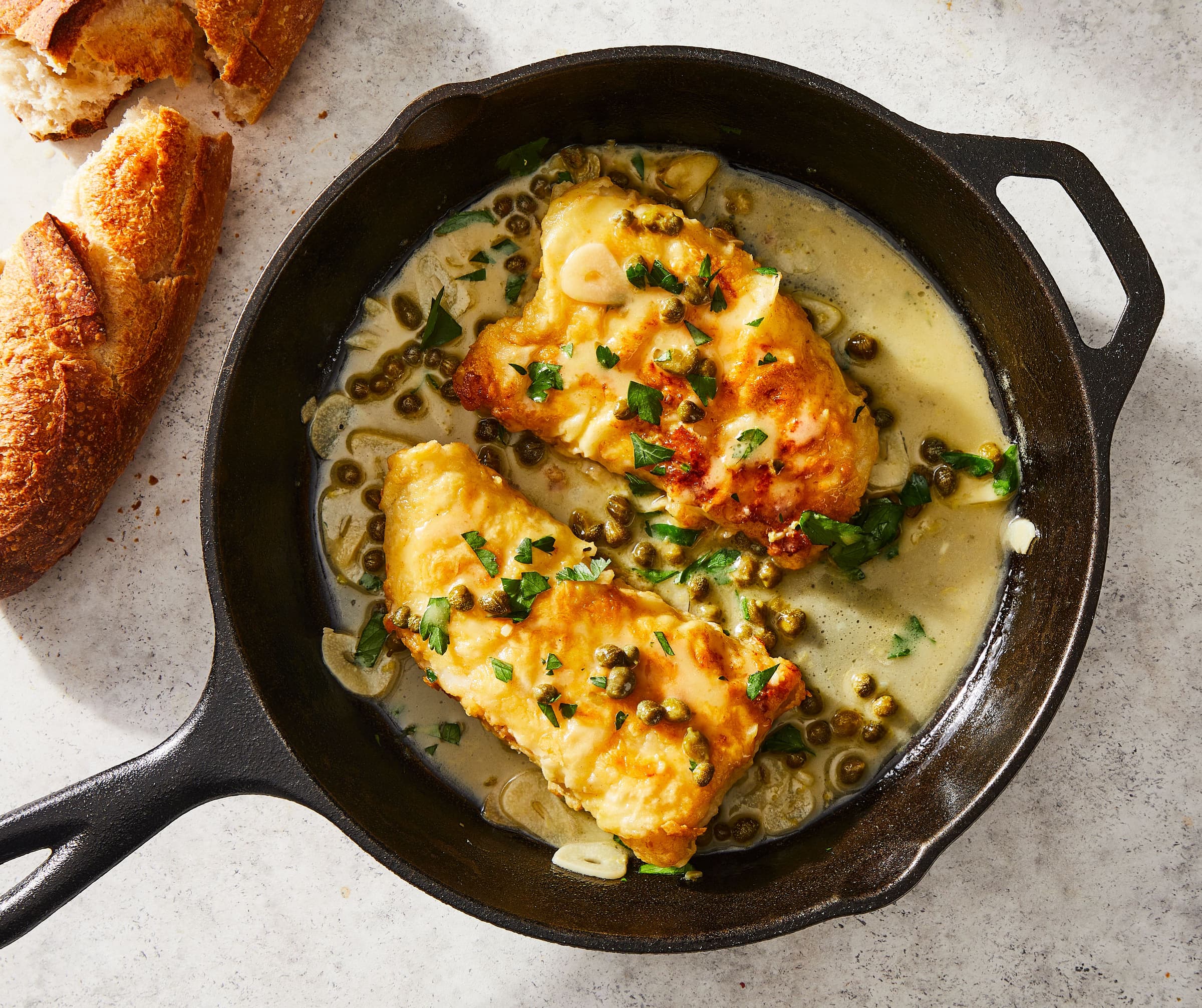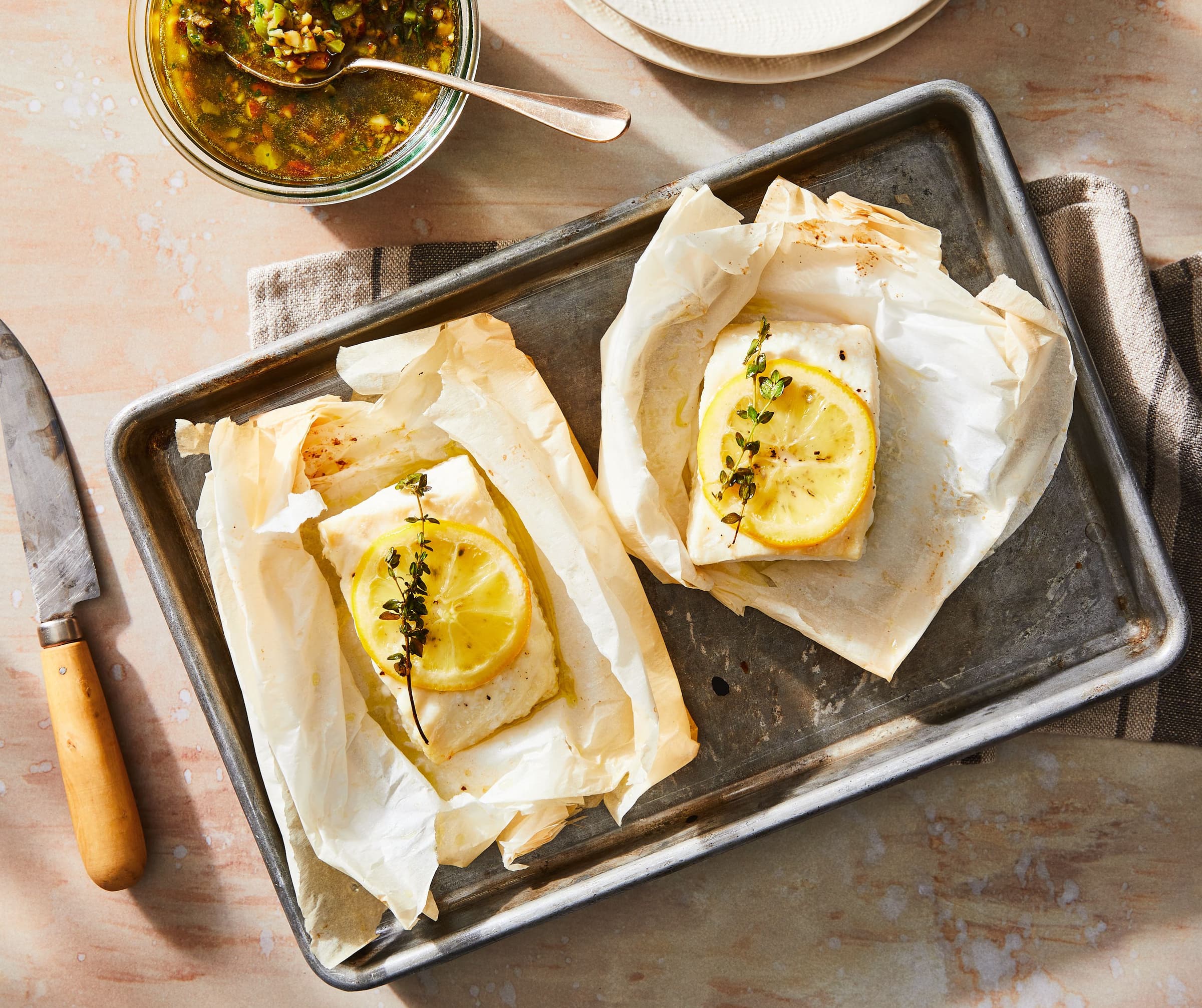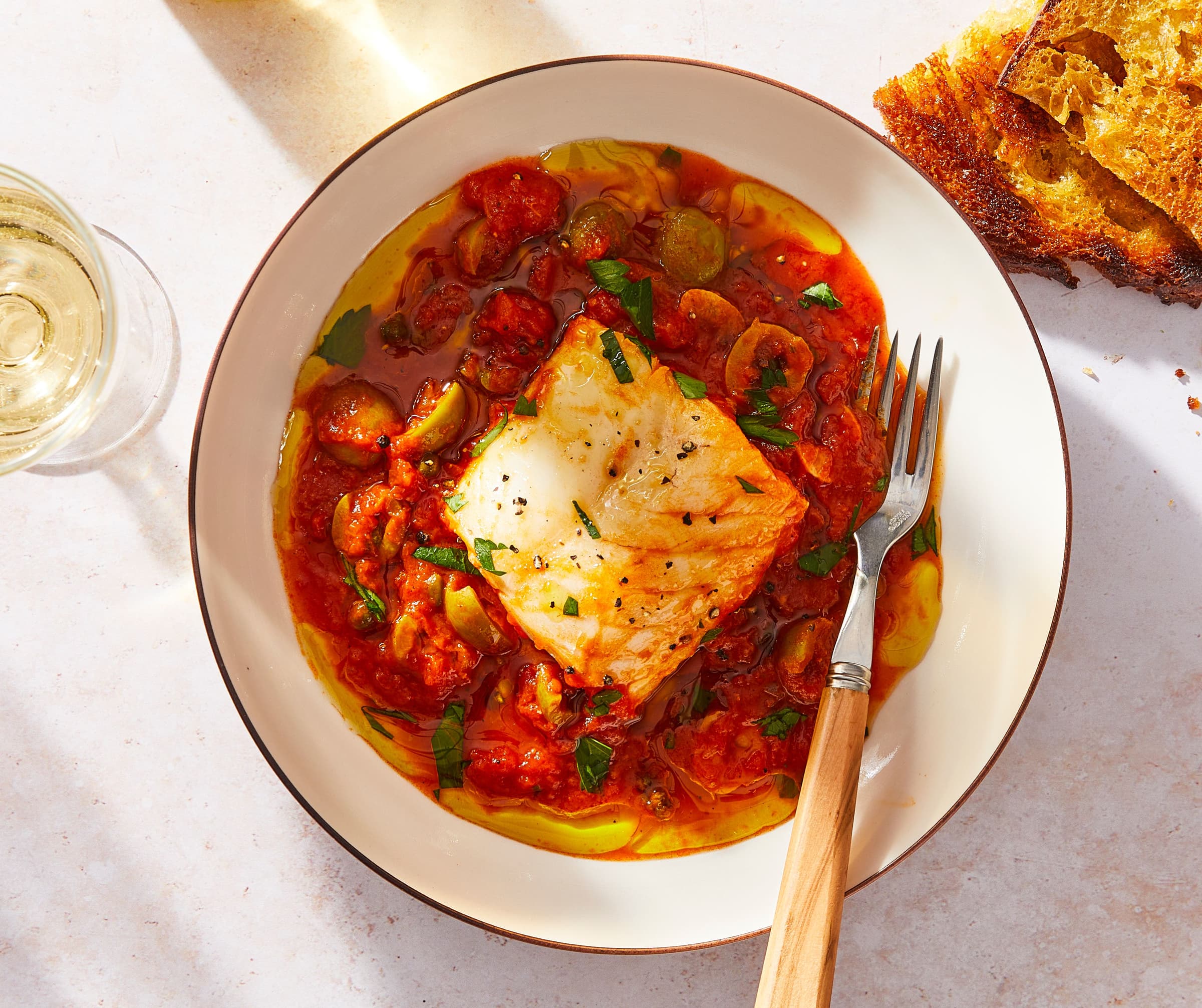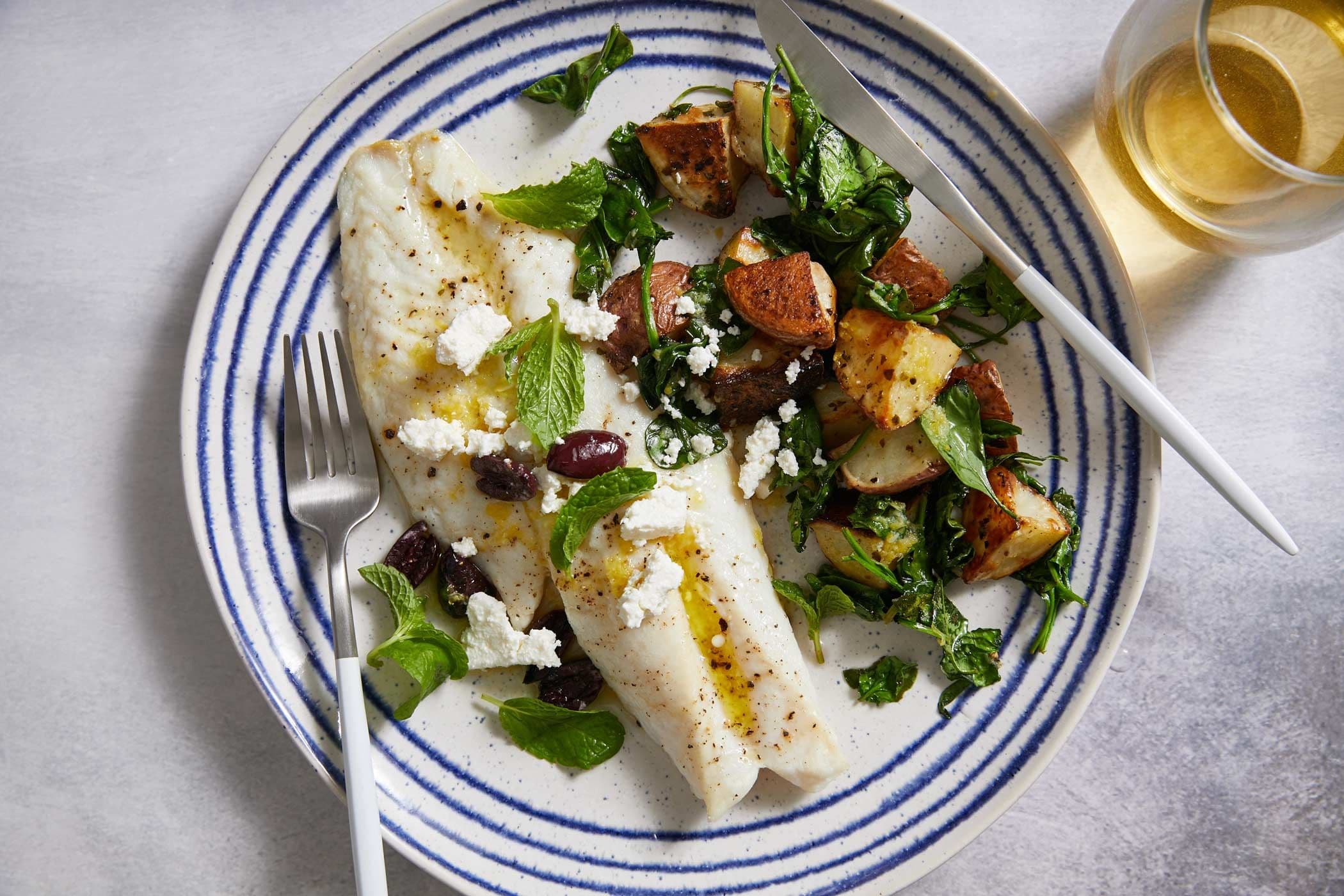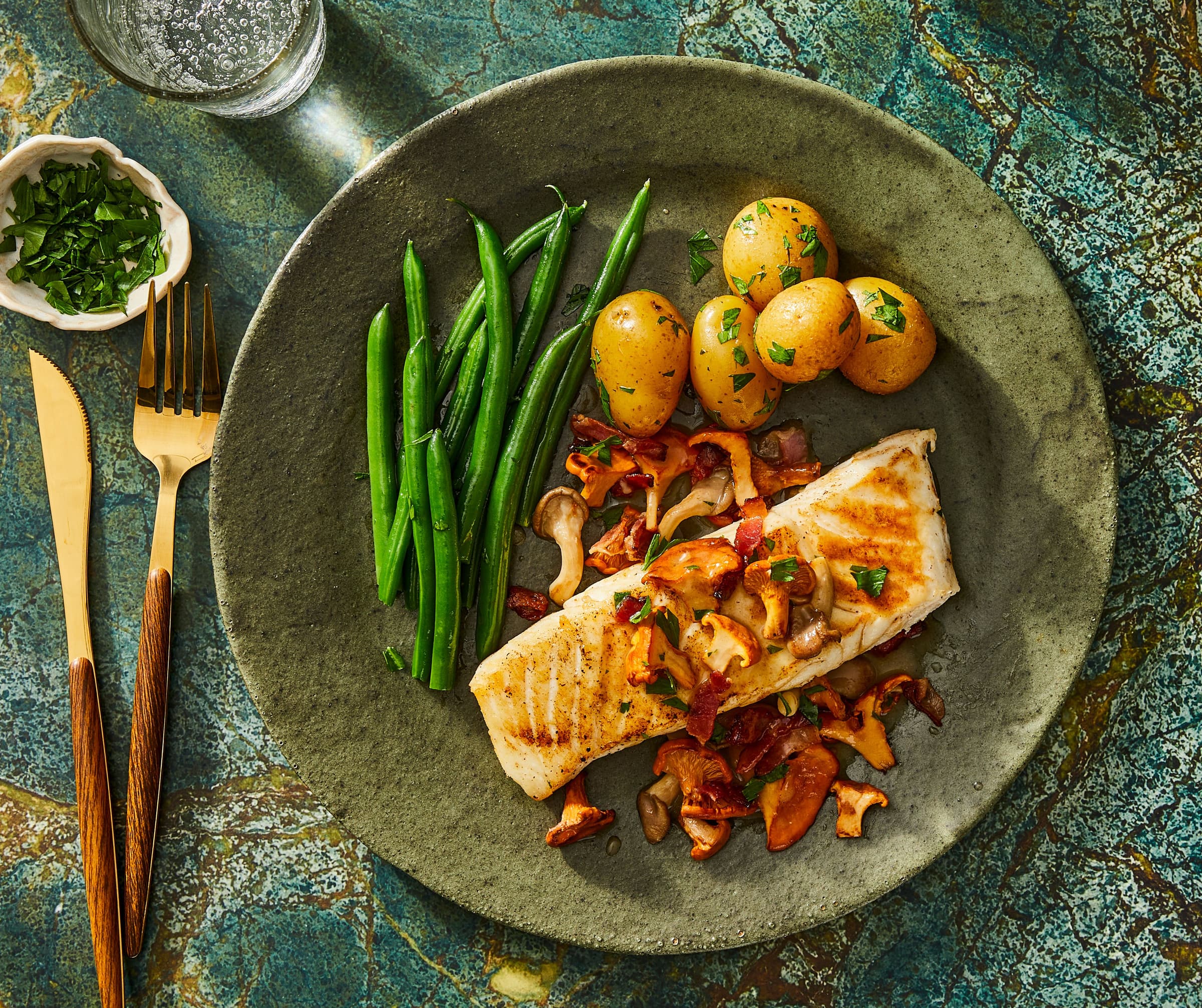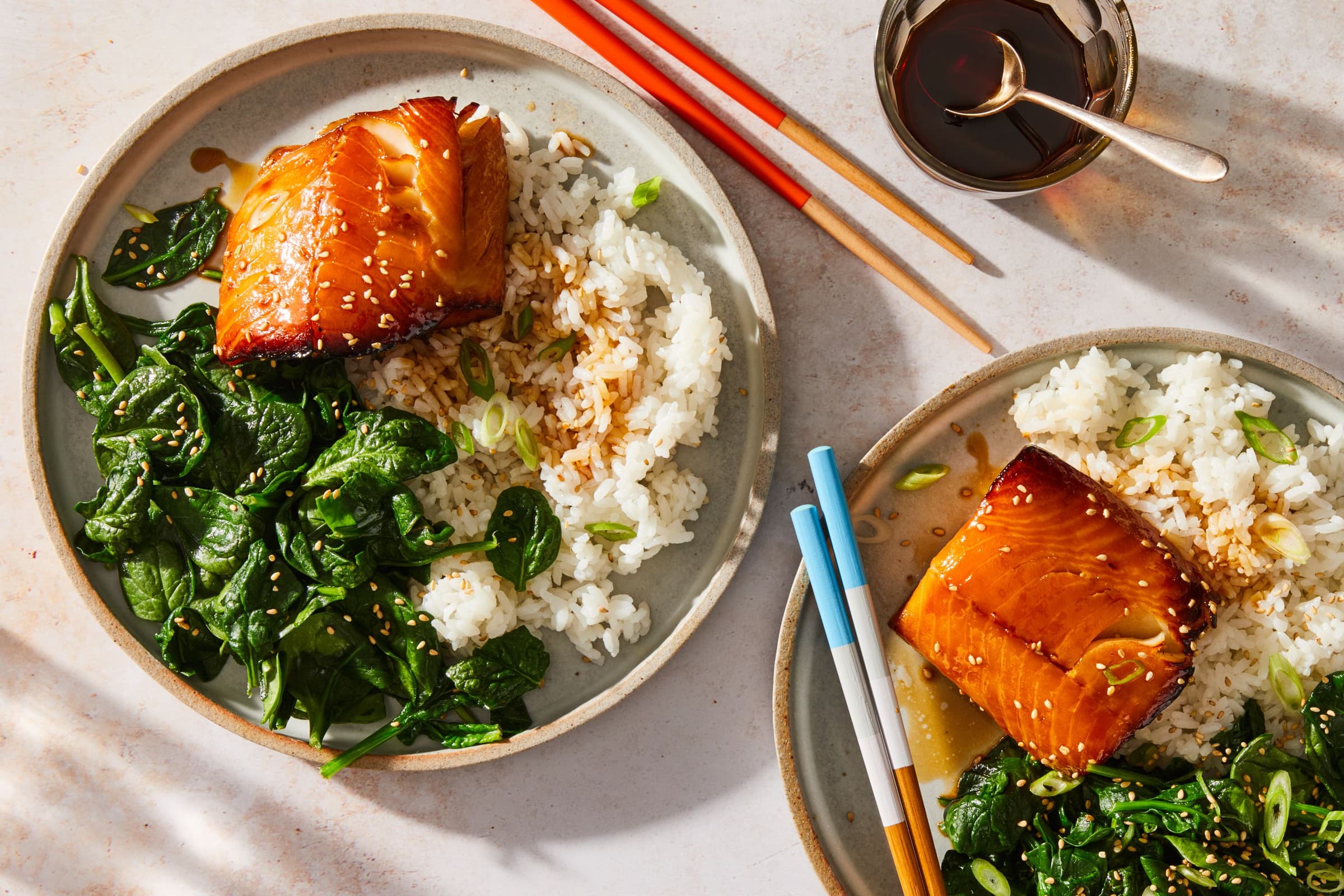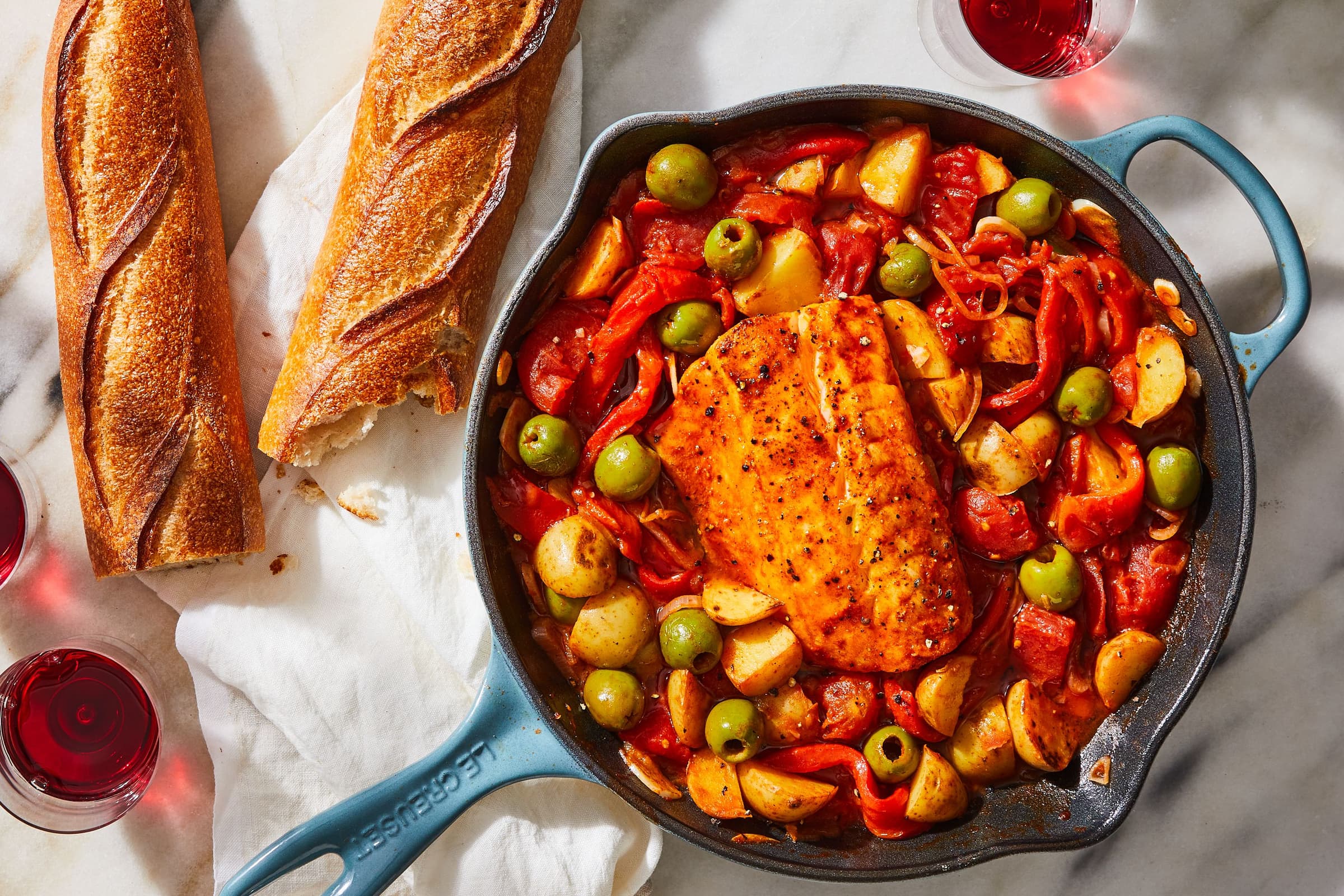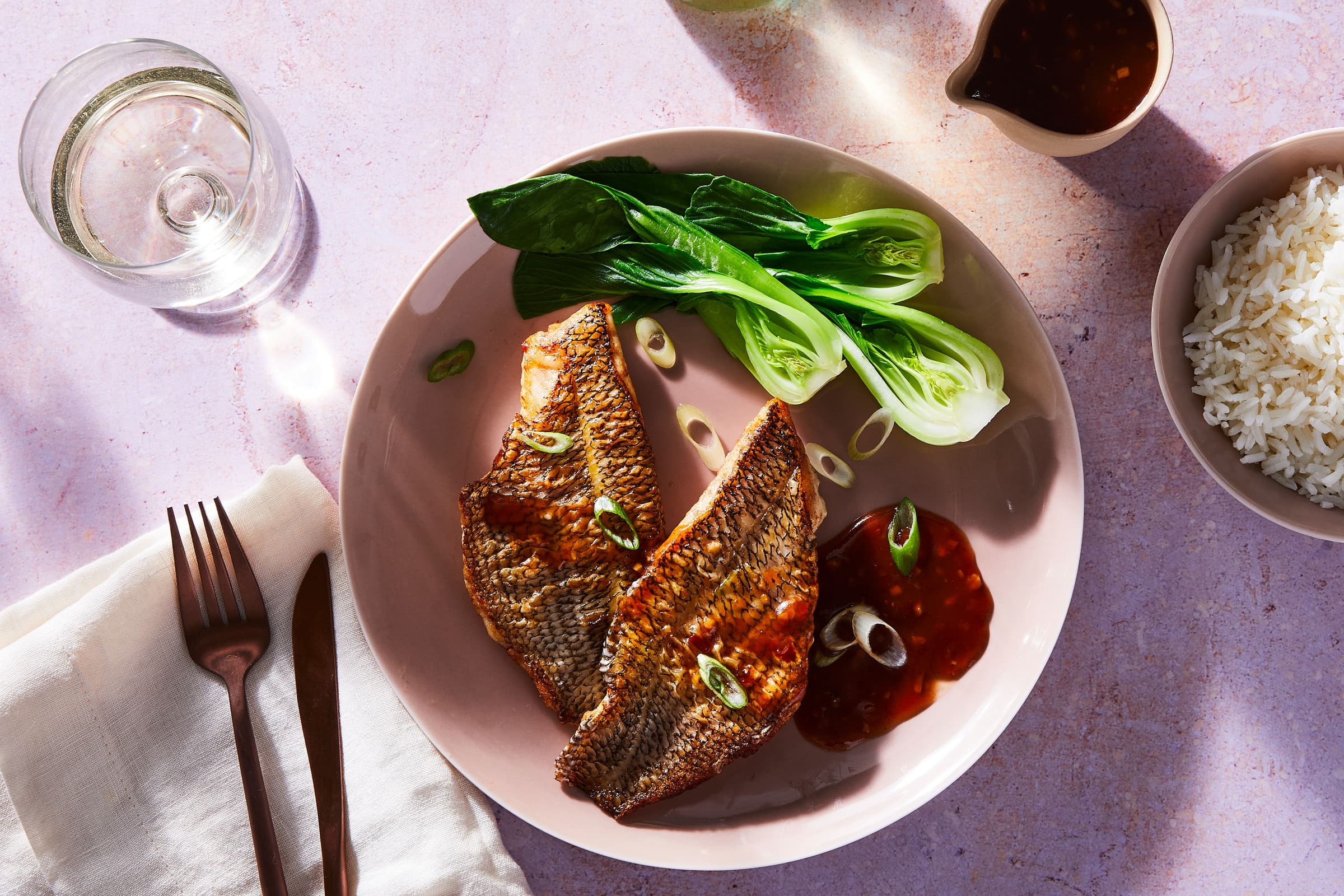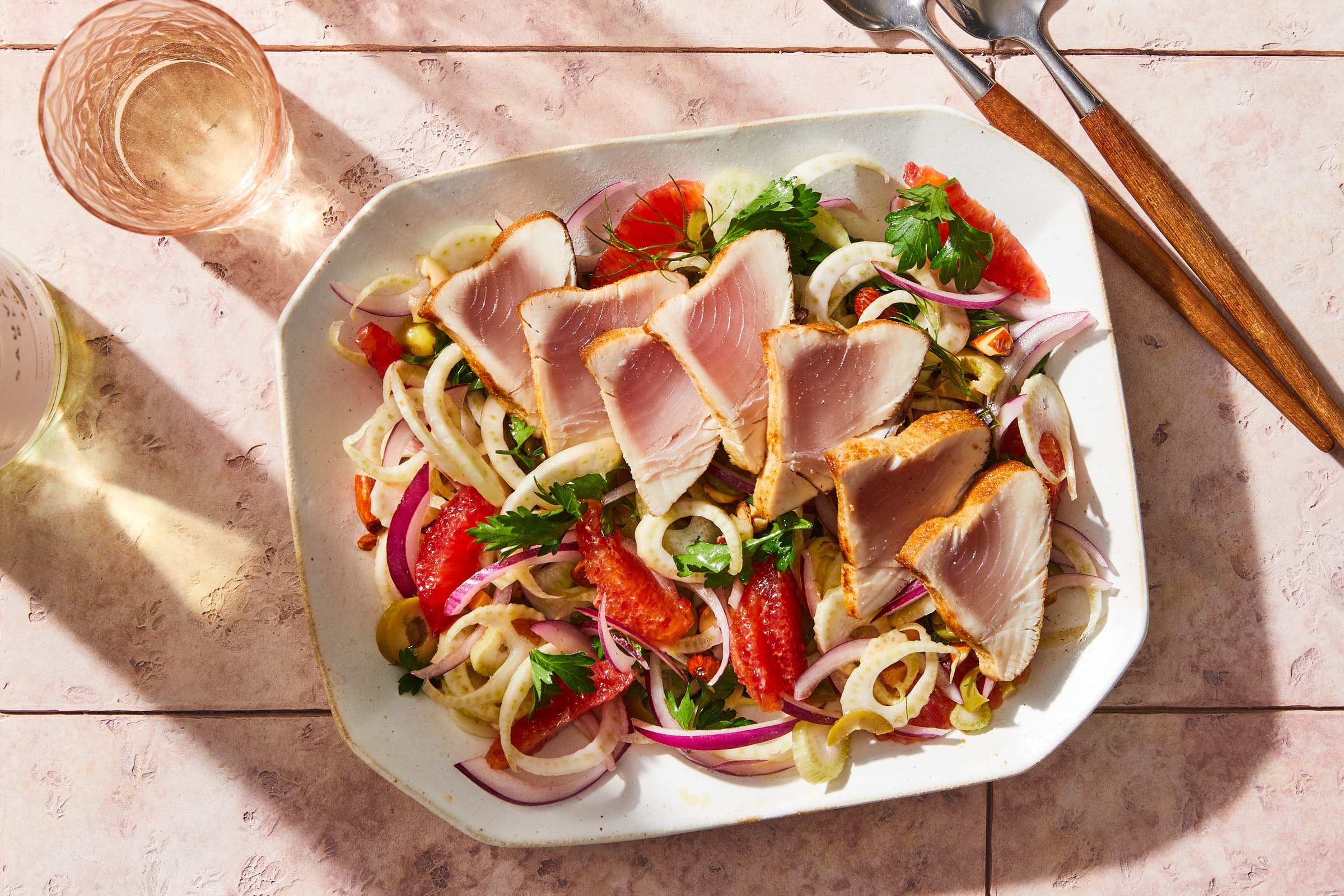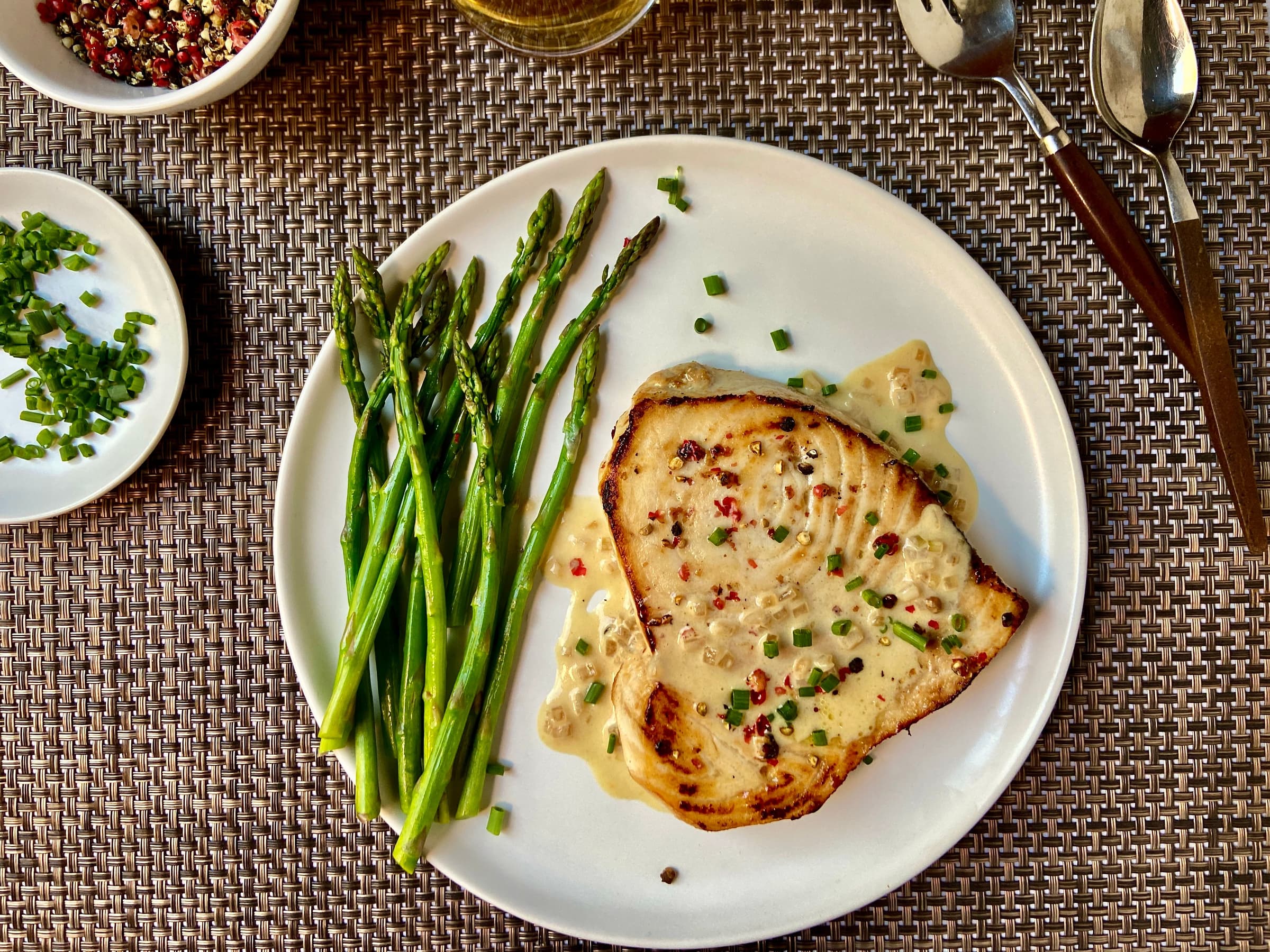While many of us regard wild-caught Alaskan salmon with their heart-healthy fats and Omega-3 fatty acids as the king of seafood nutrition, white fish offer a number of powerful nutritional benefits as well.
To clear up any confusion about the spelling, whitefish — one word — is a fresh water fish found in a large number of inland lakes across northern North America. The white fish — two words — we’re talking about, are ocean-dwelling and come in many forms, delivering unique tastes, textures, and nutrition. We source halibut, Pacific cod, lingcod, tuna, rockfish, black sea bass, sablefish, and swordfish from pristine waters in Alaska, the Pacific northwest, and New England.
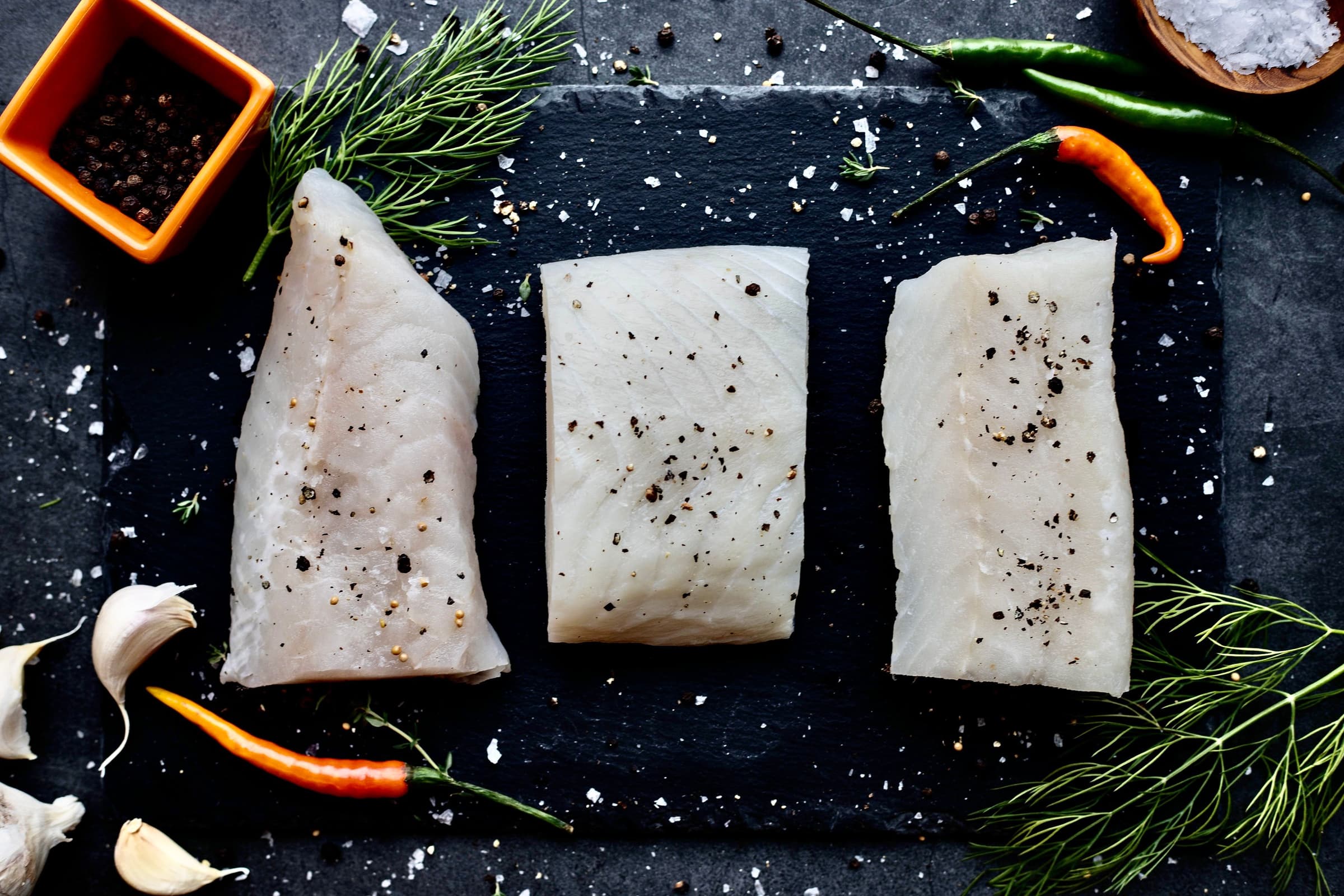
Many of our recipes use these white fish interchangeably because the similarities outweigh the differences. But there are subtle — and some not-so-subtle — differences. This article will explore and explain those differences to make choosing one species over another easier and with clearer outcomes. But first, let’s take a look at some of the health benefits of these underrepresented proteins.
Some studies link depression, anxiety, and other mental health issues with low levels of vitamin D. Osteoporosis is another risk in older women (and men) from D deficiency. Nutritionally, albacore tuna is one of the best dietary sources of vitamin D. Three ounces of cooked tuna supply more than half of your recommended daily intake requirements. Eating it al fresco may make up the remaining 50%!
White fish like cod, rockfish, halibut, and lingcod are good sources of iodine, which many of us may not be getting in our diets if we’ve switched from iodized table salt to kosher or sea salt or limit our consumption of processed foods. Iodine is necessary to regulate metabolism and aid in thyroid function.
According to Harvard Health Publishing, a public-facing information site from the graduate medical school at Harvard University, dietary fats support a number of functions. They support cell function, regulate body temperature, and aid in the absorption of fat-soluble vitamins such as A, D, E, and K. However, lean white fish (those listed above — minus sablefish, swordfish, and albacore) are great sources of lean protein with very little fat and almost no saturated fat. The good news is that a drizzle of heart-healthy olive oil or dollop of calcium-rich yogurt will provide necessary fats and enhance the flavor of your fish.
Halibut, lingcod, and rockfish are great sources of potassium in the diet, an essential nutrient which supports heart and muscle health. Potassium is shown to lower blood pressure by relaxing blood vessels, helping reduce the risk of stroke and reducing the effect of dietary sodium on blood pressure through the excretion of urine.
Selenium is an essential mineral and antioxidant that supports thyroid function which regulates our bodies metabolic processes, and may fight cell damage responsible for declining brain function. A single serving of halibut or rockfish contains more than 100% of our daily requirements.
Now let’s look at the individual species of white fish and what makes them unique and similar.
PACIFIC COD
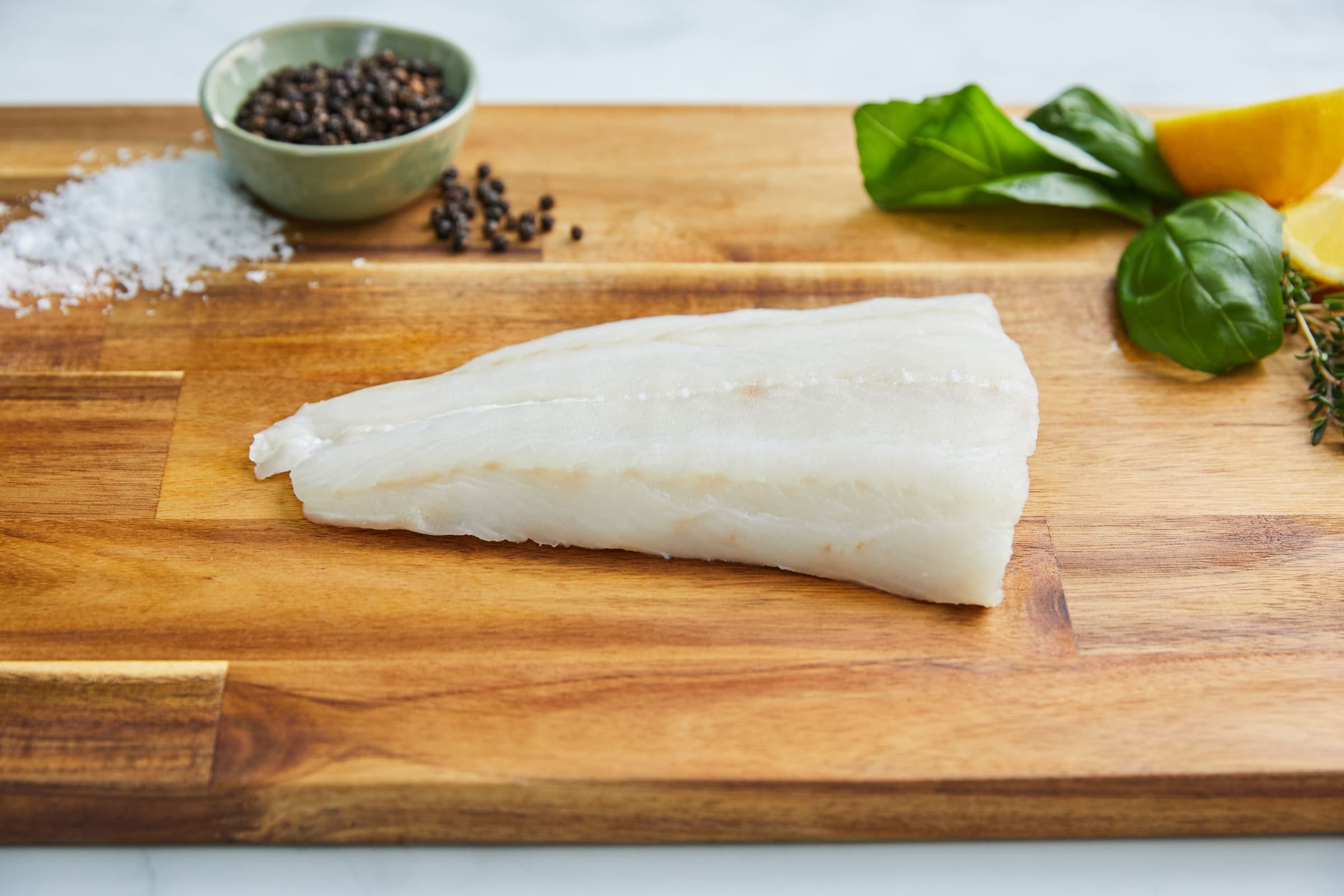
Pacific cod is especially lean. It has a mild flavor with delicate texture and medium flakes after cooking. It’s a bit fragile in a skillet, making nonstick the obvious choice of cooking vessel. Cod tends to release a lot of liquid in the pan which glues it to the surface, making flipping a fillet intact almost impossible. A liberal sprinkling of salt 10 minutes before cooking will firm up the flesh and draw out excess moisture, making it easier to pan-sear. Be sure to rinse and pat dry before adding it to the pan. Another technique used in restaurants is to lightly dust it with flour (just a sprinkle) before pan-searing. It creates a protective coating that helps the fish release from the pan more easily. Finally, don’t pan-sear cod in a dry pan or tiny bit of oil. Like a dusting of flour, the oil creates a buffer between the fish and the skillet.
Cod has a neutral flavor so it’s well suited for many different types of dishes. Soupy preparations like these delicious chowders, curries, or poached fish showcase all the best qualities of cod without having to worry about the fish sticking to the skillet or falling apart when trying to flip it in the pan. Baking cod with tomatoes and feta, then tossing with pasta is quick, painless and super easy. Classic preparations include batter-dipped or breaded cod with tartar sauce or like these crispy nuggets with marinara sauce.
ROCKFISH
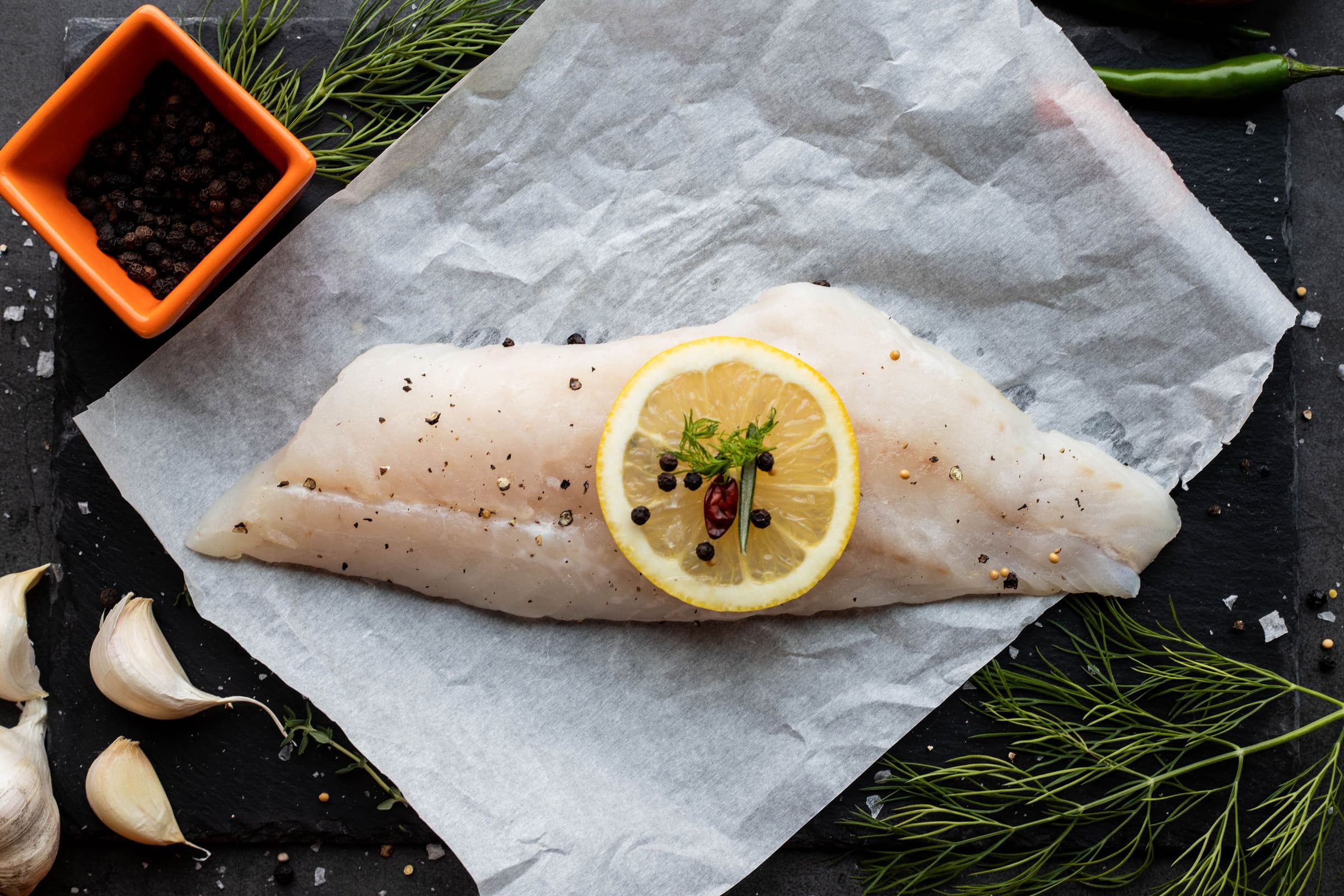
Rockfish has a mild, sweet flavor with firm texture and medium flakes after cooking. It’s quite lean, but easy to cook. Rockfish is completely interchangeable with Pacific cod because the structure and flavor are so similar. It makes amazing fish tacos, crispy beer-batter fried fish sandwiches, soups, and pan-roasts.
Like all fish, a liberal sprinkling of salt 10 minutes before cooking will firm up the flesh, making it easier to grill, pan-sear, or sauté. Be sure to rinse and pat dry before adding it to the skillet or grill.
HALIBUT
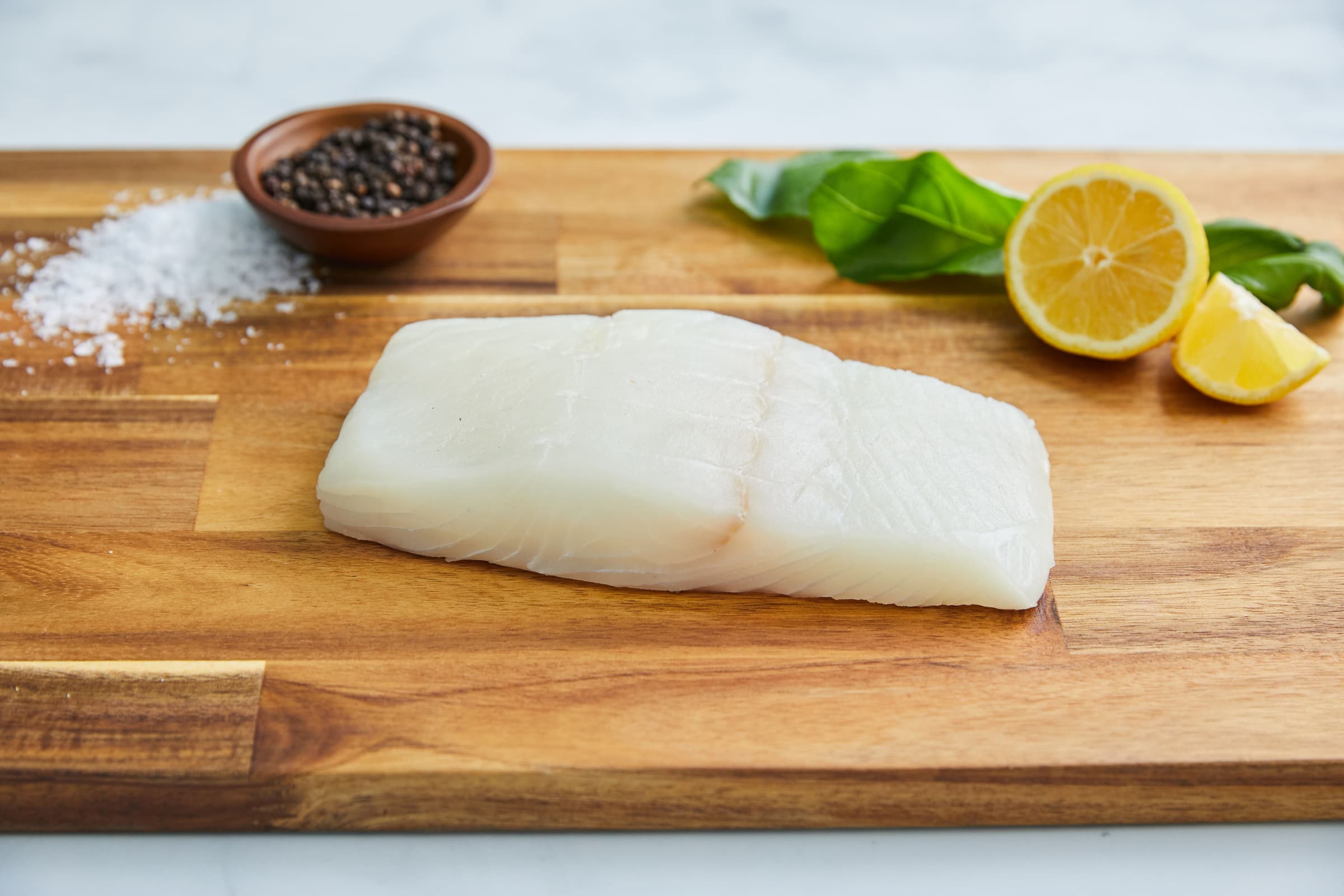
Halibut has a mild, sweet flavor and beautiful, bright white flesh with large meaty flakes when cooked. It’s fairly lean so knowing when it’s done cooking is key to keeping it from drying out. Unlike salmon, halibut is way more enjoyable when it’s cooked through. On an instant read thermometer, let it get to about 130° and then take it off the heat. The residual heat will continue to cook the fish. When some recipes say “cook until the fish easily flakes with a fork” it may be too late. Instead, cook just until the fish is firm in the center with a little spring.
It is such a premium white fish that it may seem counterintuitive to use it in recipes like these crispy fried fish tacos or soups, but the meaty texture lends itself to a wide variety of preparations. For more elegant presentations, pan-sear halibut fillets and serve them with wild mushroom pan sauce or a piccata-style lemon and caper sauce.
SABLEFISH (BLACK COD)
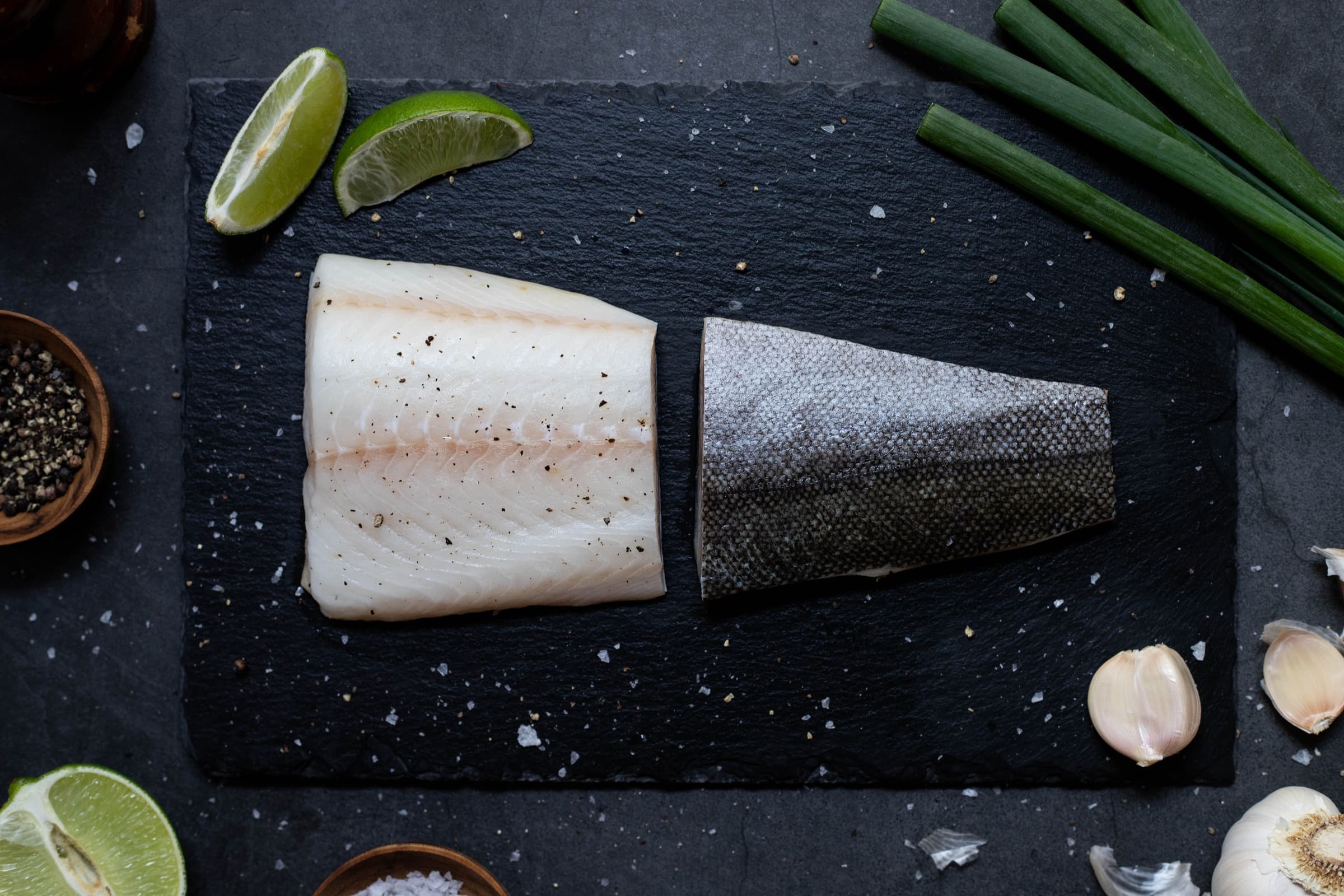
Of all the white fish we offer, sablefish (black cod) has off-the-charts levels of Omega-3 fatty acids — more than king salmon — making it a fatty, but heart-healthy source of white fish protein. It has a rich, buttery flavor and texture with large silky flakes when cooked. Unlike salmon, sablefish is best cooked to 140° to 150°. Its higher fat content allows for higher heat. Use medium-high heat to develop a golden brown sear and crispy skin which is as nutritious as it is delicious.
Sablefish with Cherry Tomato Pan Sauce or Pan-Seared Sablefish with Fresh Herb Salsa take advantage of its tasty skin. Sweetened Asian-inspired recipes that use miso, as in this iconic Nobu-inspired sablefish, a soy marinade for this delicious rice bowl, or a gingery steaming liquid for this Cantonese-style sablefish dish all yield flavorful sablefish with soft skin that you may choose to eat or remove.
LINGCOD
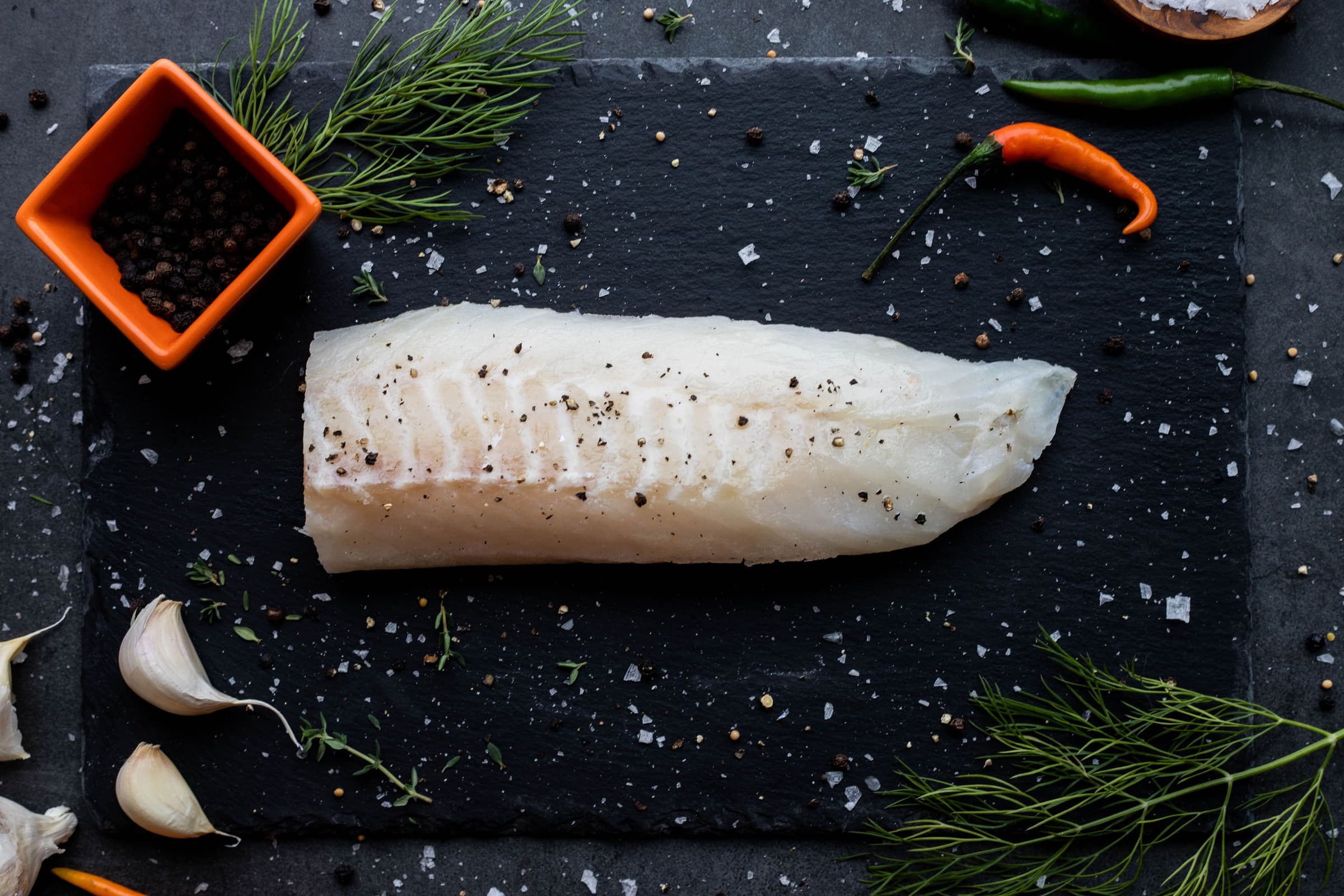
Falling somewhere between halibut, Pacific cod, and sablefish in texture and taste, lingcod showcases the best qualities of each. Mild, sweet flavor with medium silky flakes makes lingcod the perfect multi-purpose white fish. The fillets tend to be slightly thicker than both cod and rockfish, making it a bit sturdier in the skillet.
A great substitution for halibut, pacific cod, or rockfish, lingcod is delightful in these yummy chowders, crispy fish cakes, milk-poached fish, and pan-blackened fish that are served with grits. For simplicity and elegance, butter-basting lingcod in a hot skillet adds fat and brings out the fish’s natural sweetness.
BLACK SEA BASS
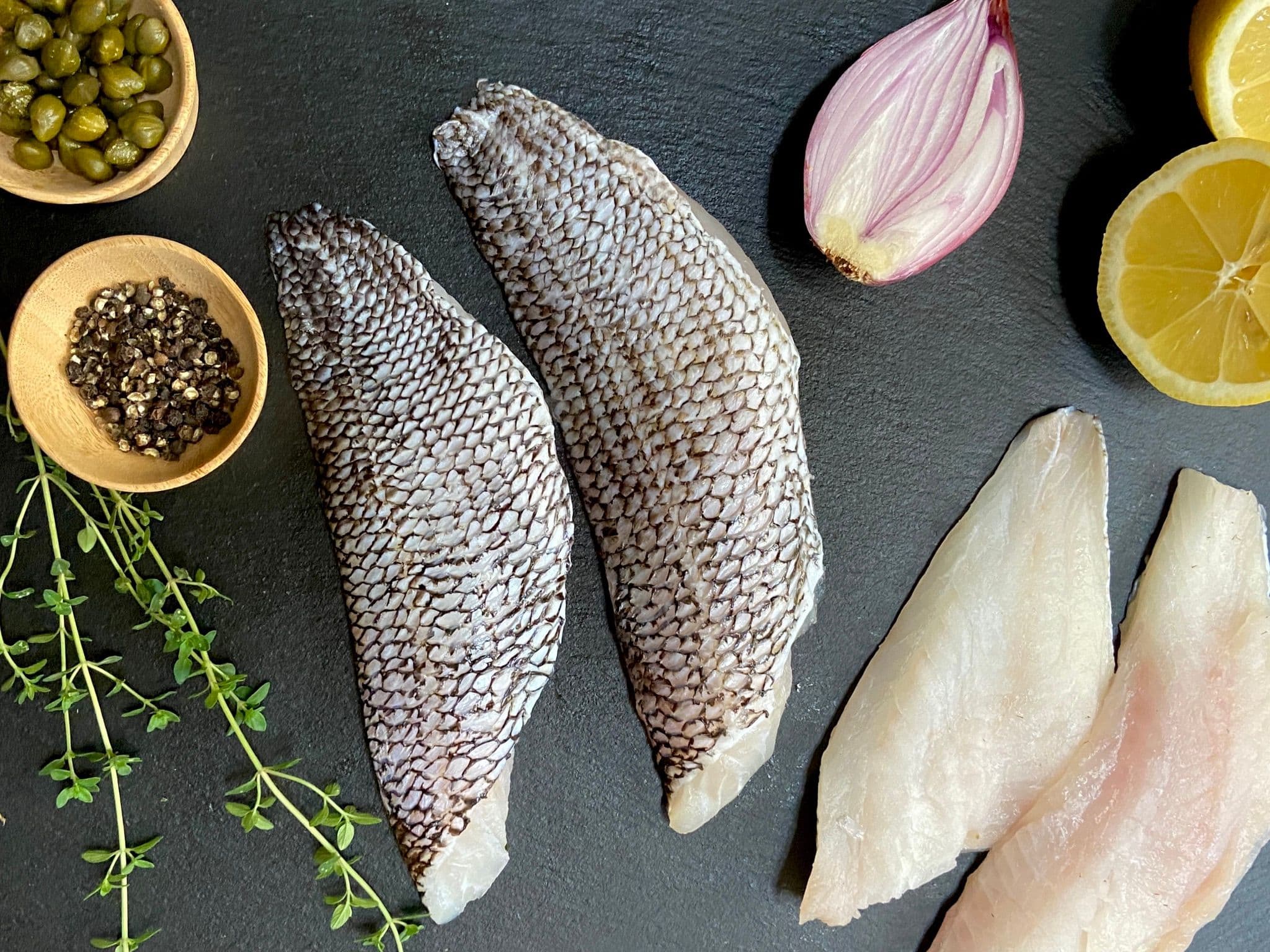
Black sea bass has a mild, sweet flavor with small, delicate flakes and delicious skin. The fillets tend to be small, 3 to 4 ounces each, so you’ll want to serve more than 1 per person.
These little fillets are absolutely delicious in any preparation but really shine when they’re pan-seared to get crispy skin, or grilled over hot coals and served with herb salsa. Like all fish, a liberal sprinkling of salt 10 minutes before cooking will firm up the flesh, making it easier to grill, pan-sear, or pan-fry. Be sure to rinse and pat dry before adding it to the skillet or grill. The fillets have a tendency to curl when pan-searing which can be remedied by making a few small slashes on the skin side or using light pressure with a spatula to hold the fish in place just long enough to set the skin.
ALBACORE TUNA
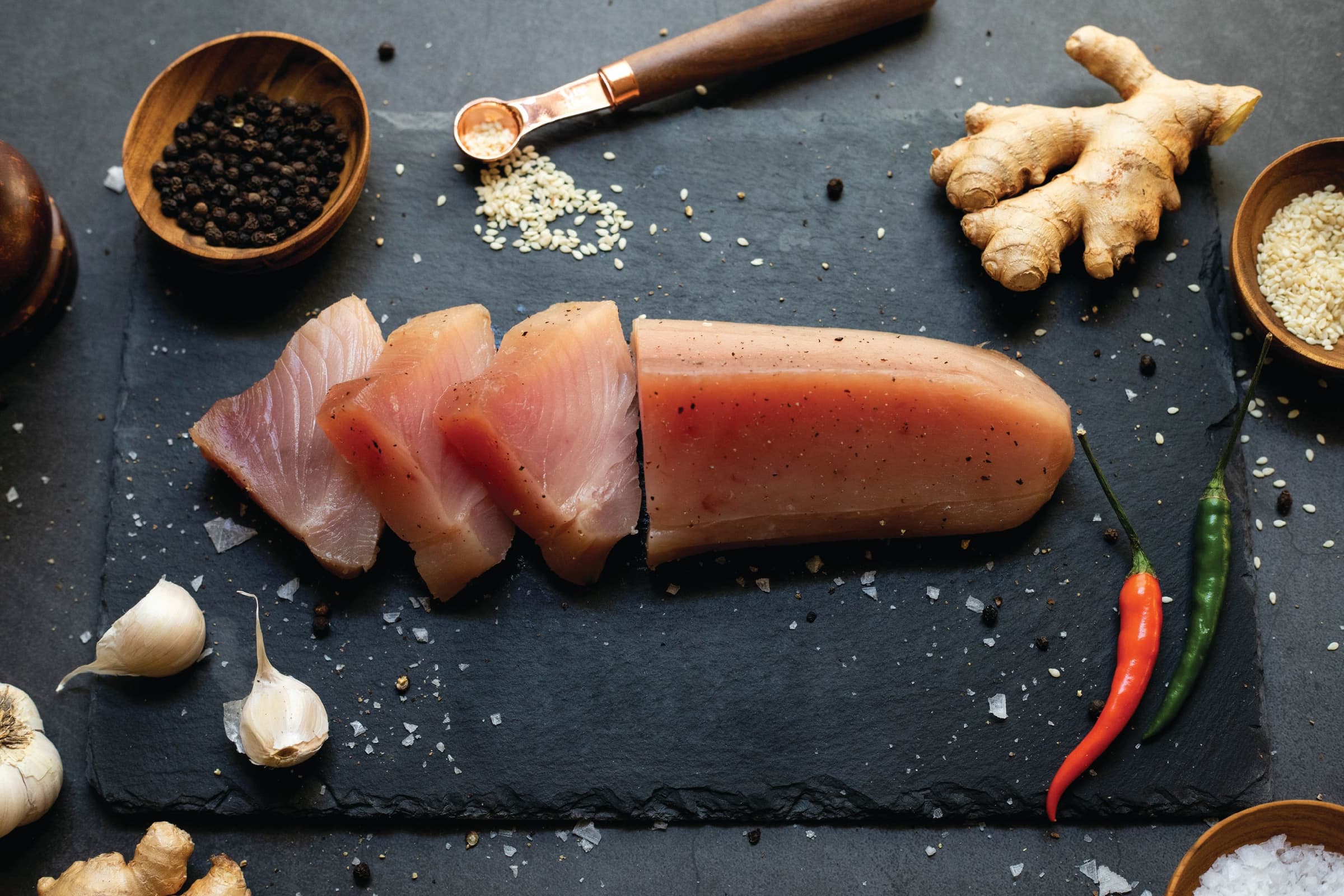
Despite albacore being relatively lean, it is a good source of omega-3 fatty acids. With a color that ranges from pale pink to grayish pink to pale orange-pink, albacore is still considered a white fish. Its flavor is mild, and slightly metallic and minerally when eaten raw. The flavor becomes a bit more pronounced when cooked. The flakes are large and meaty when fully cooked.
Whole albacore are cut into 4 triangular-shaped loins: 2 from the top and 2 from the bottom. The loins cut from the bottom contain the belly flaps which are especially delicious, rich, and fatty. You can get a really good sear on the flaps without overcooking them. To make searing the fillet or loin easier, remove the belly flap and cook it separately. To make slicing easier, wrap the slightly undercooked tuna loin in plastic or waxed paper and let sit for about 2 minutes. The steam trapped in the wrapping will soften the crust on the fish, making it much easier to slice neatly and cleanly.
Cooked albacore is best served lightly seared with a rare center. In a hot pan, cook the tuna for about 1 minute per side. Raw albacore makes delicious Ceviche, poke, and sushi. Seared and sliced fillets are super tasty when marinated with Lemon Garlic, and Herbs, or coated with sesame seeds for rice bowls. Try oil-poaching albacore and make your favorite tuna-mayo salad. It’s incredible and ruins you for the canned stuff. A flavorful alternative to beef, these Niçoise-inspired and Bacon-flavored tuna burgers are packed with the bold flavors of the Mediterranean or your favorite gastro pub.
SWORDFISH
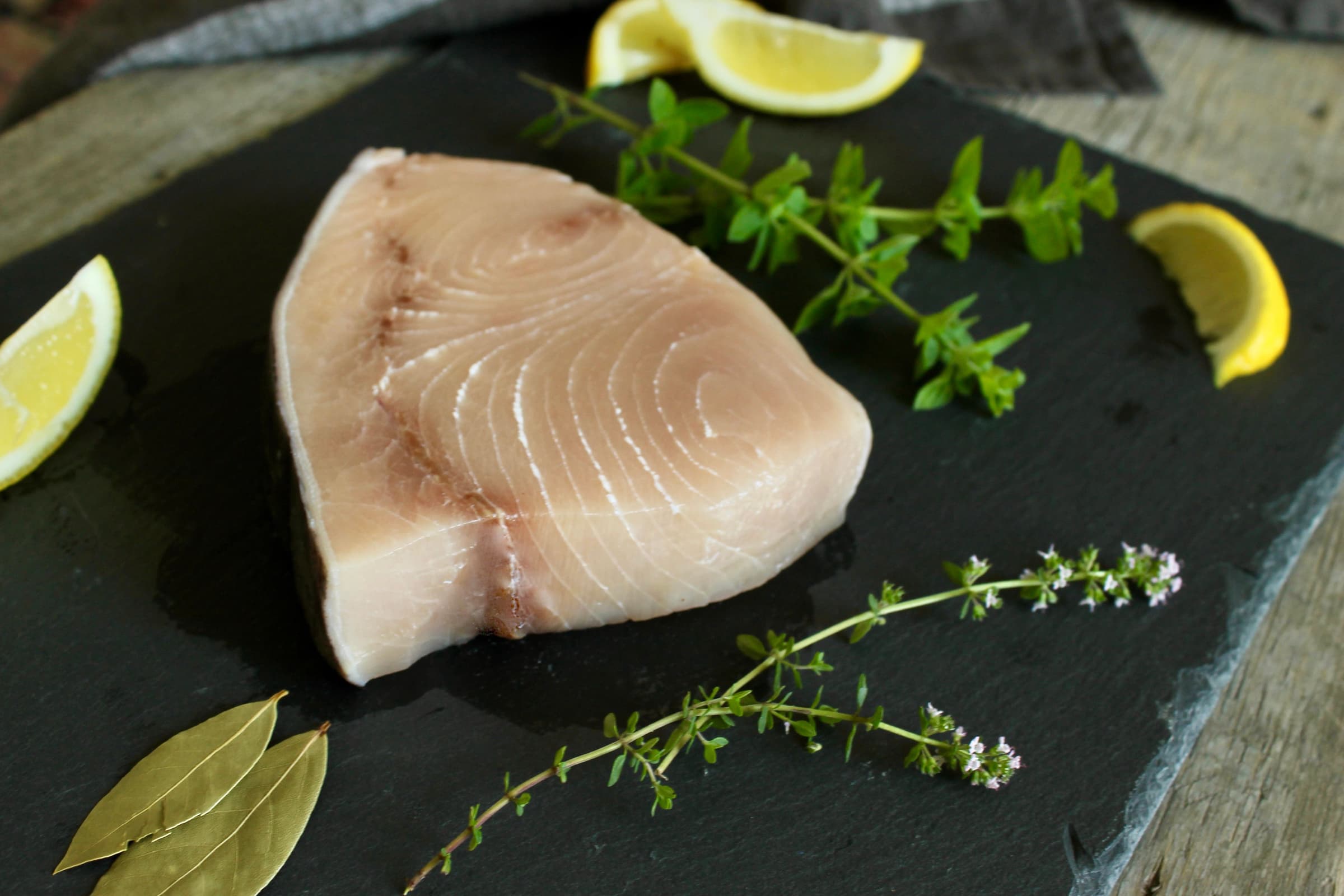
Rich and meaty swordfish is full of essential nutrients including selenium, vitamin D, and more omega-3 fatty acids than albacore. It has a buttery sweet, almost nutty flavor, with large tight flakes that remain intact after cooking. The texture is closer to pork loin than it is to other white fish. Swordfish is best cooked to about 130°F (medium) on an instant read thermometer, then left to rest 5 minutes before serving. But personal preference can dictate more or less cooking time.
Because swordfish is so meaty, it holds up well on the grill or in a hot skillet. It can take on strong flavors like harissa in these kebabs, cracked peppercorns and cognac in this au poivre, capers and lemon in this piccata-style swordfish, or herb, chili, and lemons in this Sicilian-style grilled swordfish.

